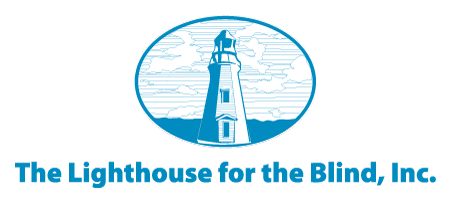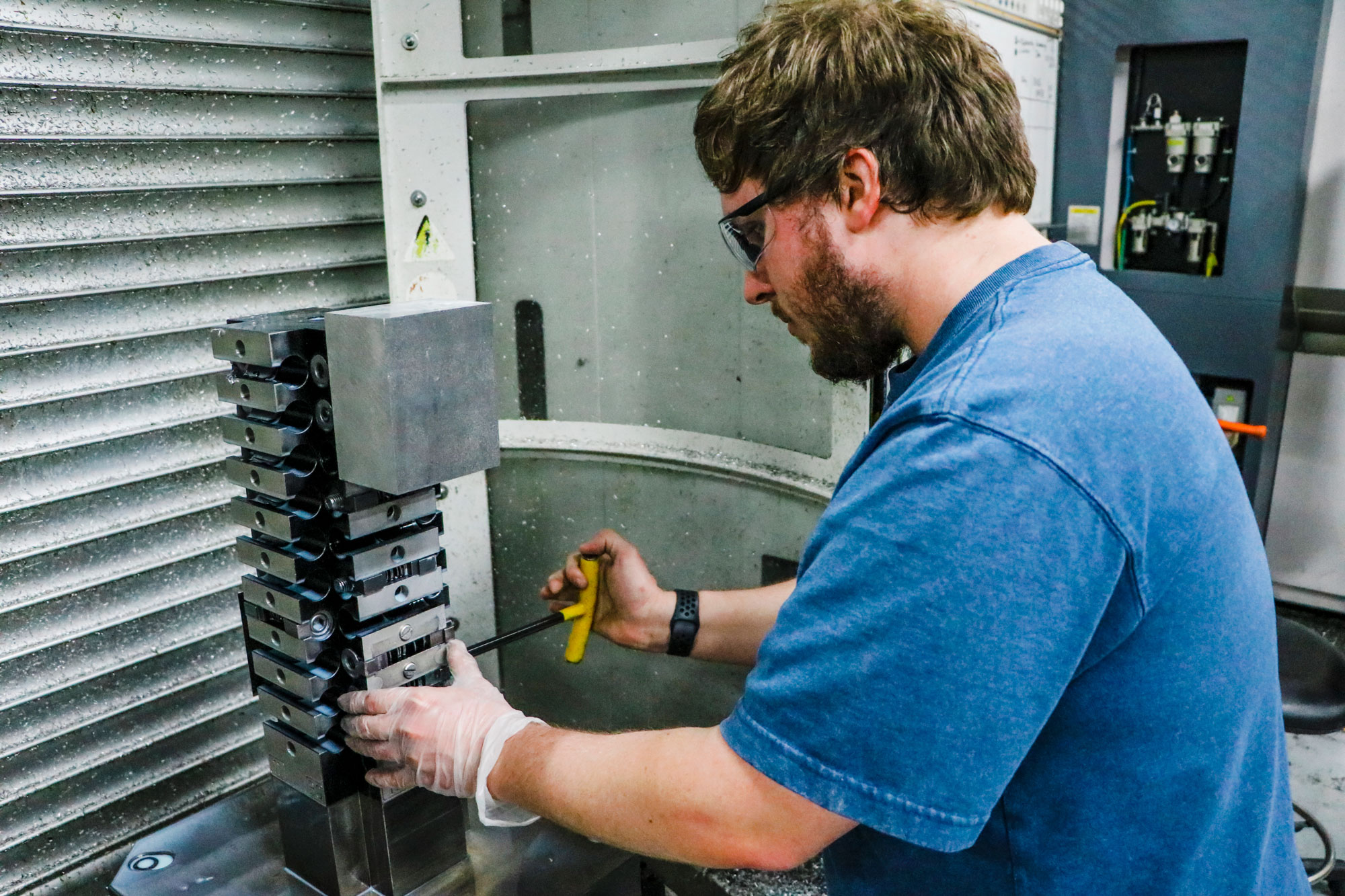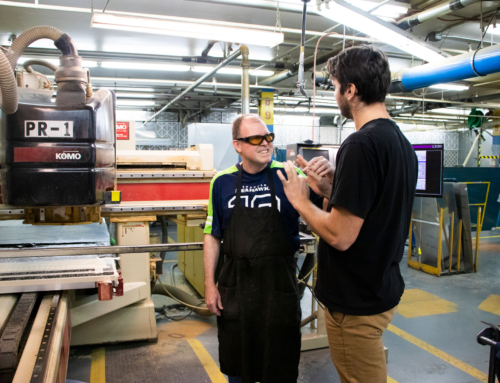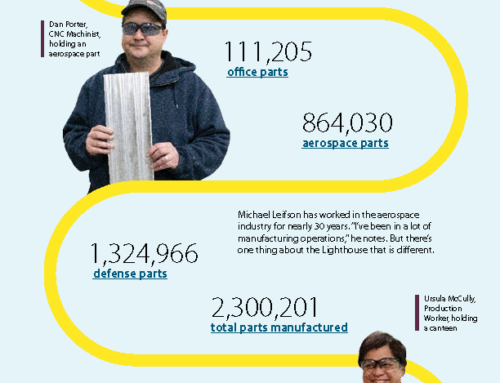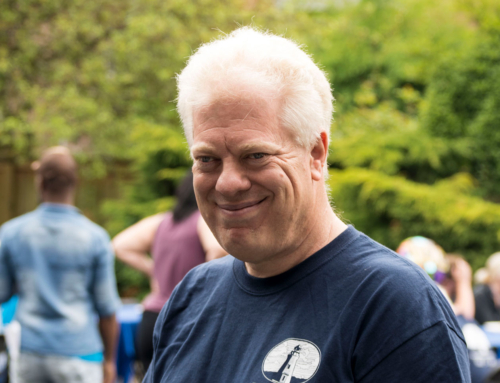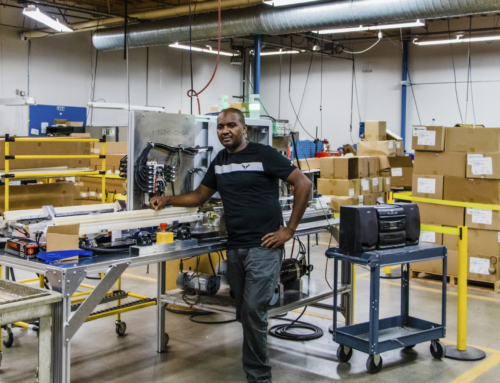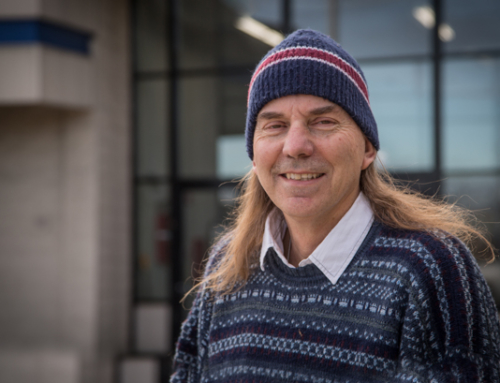Manufacturing airplane parts has been a huge part of what we do at The Lighthouse for the Blind, Inc. ever since we started our relationship with The Boeing Company in 1952. We started with simple machining of basic parts and equipment. Since then, it has now grown into a world class precision machining operation of more than 7,000 unique parts per year. Michael Johnson, Aerospace Division Manager at The Lighthouse for the Blind, Inc. explains, “the equipment has changed over the years. As the CNC (Computer Numerical Control) machine evolved, so did we. As we brought on those skills and capabilities, the complexity of what we were able to do, and our statement of work grew with it.”
Machinists who are blind and DeafBlind at the Lighthouse now operate an array of machines. They produce airplane parts and products, operating a simple punch press, clicker press, multiple four access CNCs, alongside multi-access lathes. “The Lighthouse is not any different than any other manufacturing facility that I’ve worked at. In fact, we’re a world class machine shop,” Michael explains. “Our aerospace parts have a 99% acceptance rate. And, we’ve got a 98%-100% on time delivery rate. Because of that, we are classified as a Premier Bidder with The Boeing Company” he continues. Learn more about our manufacturing business >>
Making Machines Accessible
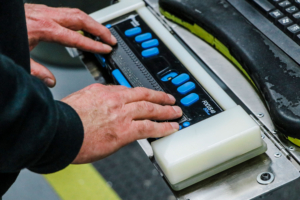
Close up image of light skinned hands resting on a braille keyboard on the refreshable braille display portion.
Our Accessibility Program helps to ensure that all employees are equipped with the right adaptive equipment to make their job accessible.
There are many different types of adaptive equipment that make our machine shop accessible for people who are visually impaired. These include:
- Refreshable braille displays are electronic tools that function by raising and lowering combinations of pins. Those pins form braille dots corresponding to text on the computer screen.
- Large print screens allow text and graphics to be magnified anywhere from 2 times to 60 times their original size.
- Voice technology allows text to be read aloud with computer synthesized speech.
- Tactile fixturing allows machinists to identify machine controls through touch.
- Thorough organization of tools and equipment ensures that employees can locate what they need to perform their jobs.
- Many other features can be implemented to fit each individual’s accessibility needs and preferences, as well.
Learn more about how jobs are made accessible by reading How People Who are Blind Make Airplane Parts, Balance Million Dollar Budgets, and Lead Organizations >>
Diverse, Sustainable, and Meaningful Employment
Every line of business at the Lighthouse supports our mission to empower people who are blind, DeafBlind, and blind with other disabilities. We do that by creating diverse, sustainable, and meaningful employment opportunities.
Michael Johnson has worked in the aerospace industry for nearly 30 years. “I’ve been in various aspects of the industry. I’ve been in a lot of manufacturing operations,” he notes. But there’s one thing about the Lighthouse that is different. “At any other company I’ve been at, my job was to produce profits no matter where I was at. But what I’m really tasked with at the Lighthouse is to expand opportunities with jobs. That’s our driving force, we want to create jobs,” Michael continues. “We have around 100 employees working directly on manufacturing aerospace parts. Of those employees, 77% are blind or DeafBlind.”
Throughout the COVID-19 pandemic, Michael notes how the Lighthouse held true to our mission. He explains, “more than anything, our mission and what we are driven by is completely different than most other companies. Throughout the pandemic, other companies were protecting their assets and their bottom line. Meanwhile, we were trying to preserve jobs. We were able to cross utilize and cross train people and use them in other areas.”
Upward Mobility
Opportunity for upward mobility is at the core of Lighthouse values. This is especially true in our manufacturing operation. In the machine shop, we employ people who are blind and DeafBlind in positions ranging from entry level, non-technical work all the way up to supervisory roles and everything in between.
“Sometimes people come here and it’s their first job. They’re not quite familiar with manufacturing,” Michael notes. “But, if they have some aptitude and have some desire, we’re able to move them up to doing some simple load up on the machine. Then, they might move to doing set up or move to different machines.”
“An objective we’re always working toward is how to get people to the point where someday they can be the lead on machines. We want to figure out how to start training people to become a supervisor. It all starts with how to give them opportunities through the machine shop floor to get them really familiar with it,” he states.
Employees who are interested also have the opportunity to participate in the Aerospace Joint Apprenticeship Committee (AJAC) training program. Through the AJAC program, employees who are blind are provided additional development opportunity to advance their skills and careers. The Lighthouse has worked closely with AJAC staff to meet apprentices’ needs for accessible learning and accommodations. Learn more about the AJAC program and 6 recent Lighthouse graduates >>
Success Stories
Mae Mullen has worked at the Lighthouse for nearly 15 years and became the first DeafBlind female CNC operator. Read more about Mae’s story >>
Samantha Porter has worked at the Lighthouse for over 8 years and participated in the AJAC program to become a certified machinist so that she could train other DeafBlind machinists in their native language. Watch Samantha’s story >>
Rachel Talley was the first female to go through the AJAC program at the Lighthouse and is now a Senior Aerospace Production Worker. Read Rachel’s story >>
Lauren has been working at the Lighthouse for over 15 years and is a set up specialist who makes aircraft parts. Watch Lauren’s story >>
